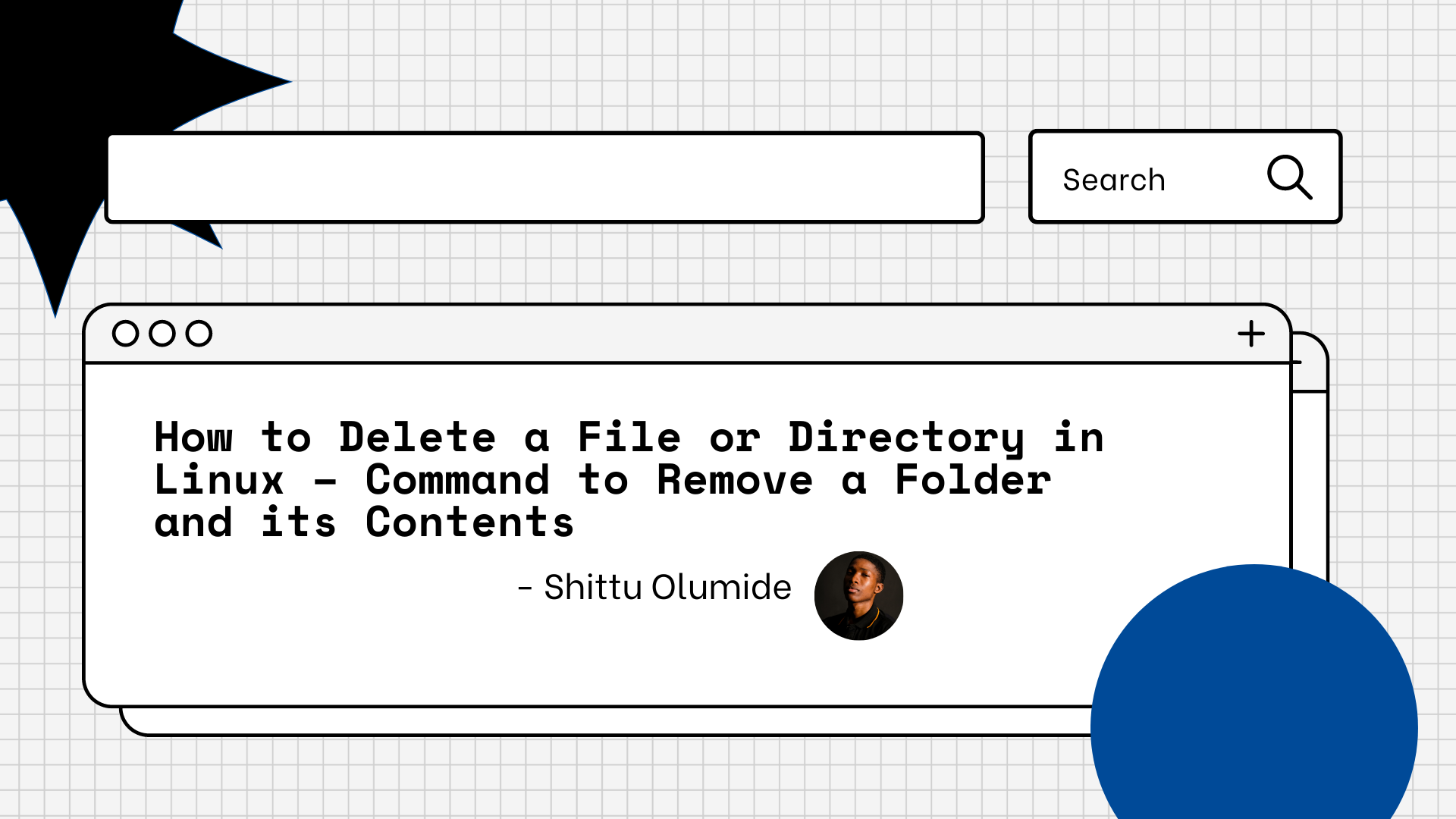- Как удалить файл через терминал Linux
- Удаление файлов в Linux
- Выводы
- How to Delete a File or Directory in Linux – Command to Remove a Folder and its Contents
- How to Delete a File in Linux
- Using the GUI file manager
- Using the rm command
- Using the shred command
- Using the trash-cli command
- How to Delete a Directory in Linux
- Using the rm command
- Using the rmdir command
- Conclusion
Как удалить файл через терминал Linux
Эта небольшая заметка ориентирована на совсем начинающих. Сегодня мы рассмотрим как удалить файл linux через терминал. Для более опытных пользователей это элементарная задача, но новичкам надо с чего-то начинать. Знать как работать с файлами в консоли очень важно.
К тому же удаление из консоли дает много преимуществ и большую гибкость. Например, с помощью специальной команды вы можете полностью стереть файл с жесткого диска, так что его уже ни за что невозможно будет восстановить или одной командой с помощью специальных символов, условий или регулярных выражений удалить сотни ненужных файлов в одном каталоге или подкаталогох соответствующих определенному критерию.
В Linux для удаления файлов предусмотрена стандартная утилита rm. Как и все остальные, стандартные утилиты в имени rm тоже заложена определенная идея. Это сокращение от английского слова Remove.
Удаление файлов в Linux
Чтобы удалить файл linux достаточно передать в параметрах команде адрес файла в файловой системе:
Чтобы удалить все файлы, начинающиеся на слово file можно использовать специальный символ *, означает любой символ в любом количестве:
Эта команда удаления файла в linux должна использоваться очень осторожно, чтобы не удалить ничего лишнего. В утилите есть опция -i, которая заставляет программу спрашивать пользователя перед тем, как удалить файл linux:
rm: удалить пустой обычный файл «/home/user/file»?
Если файлов очень много, вы уверены в правильности команды и отвечать каждый раз y неудобно, есть противоположная опция — f. Будут удалены все файлы без вопросов:
Для удаления директорий, вместе с файлами и поддиректориями используется опция -R, например:
Будет удалено все что находиться в папке dir, и эта папка. Только будьте бдительны, чтобы не получился знаменитый патч Бармина:
Не стоит выполнять эту команду в своей системе, как видите, она удаляет все файлы в файловой системе Linux.
Удаление файла в linux также возможно с помощью утилиты find. Общий синтаксис find:
find папка критерий действие
Например, мы хотим удалить файл linux по имени:
find . -type f -name «file» -exec rm -f <> \;
Будут найдены все файлы с именем file в текущей папке и для них вызвана команда rm -f. Можно не вызывать стороннюю утилиту, а использовать действие delete:
find . -type f -name «file» -delete
Удалить все файлы в текущей директории, соответствующие определенному регулярному выражению:
find . -regex ‘\./[a-f0-9\-]\.bak’ — delete
Или удалить файлы старше определенного строка, может быть полезно для удаления старых логов:
find /path/to/files* -mtime +5 -exec rm <> \;
Будет выполнено удаление файлов через терминал все файлы в папке старше 5-ти дней.
Чтобы полностью стереть файл, без возможности восстановления используйте команду shred. Во время удаления файлов с помощью утилиты rm удаляется только ссылка на файл, само же содержимой файла по-прежнему находиться на диске, пока система не перезапишет его новыми данными, а пока этого не случится файл можно легко восстановить. Принцип действия утилиты такой — после удаления файла, его место на диске несколько раз перезаписывается.
Опцией -n — можно указать количество перезаписей диска, по умолчанию используется 3. А если указать опцию -z программа при последней перезаписи запишет все нулями чтобы скрыть, уничтожение файла.
Выводы
Вот и все. Теперь вы знаете как удалить файл в Ubuntu, как видите, делать это не так уж сложно. Если у вас остались вопросы, пишите в комментариях!
Обнаружили ошибку в тексте? Сообщите мне об этом. Выделите текст с ошибкой и нажмите Ctrl+Enter.
How to Delete a File or Directory in Linux – Command to Remove a Folder and its Contents
Shittu Olumide
In Linux, deleting files or directories is a fundamental operation that every user must know. Although it may seem like a straightforward task, there are different methods to delete files or directories, each with its specific use case.
This tutorial will provide a step-by-step guide on how to delete files or directories in Linux. We will also walk through the commands you can use to remove files and folders along with their content.
How to Delete a File in Linux
Deleting a file involves removing the reference to the file from the file system. The file itself is not immediately removed from the storage device, but its space is marked as available for reuse.
There are several ways to delete a file in Linux. Here are some of the most common methods:
Using the GUI file manager
Most Linux distributions come with a GUI file manager that allows you to delete files using a graphical interface. Simply navigate to the file you want to delete, right-click it, and select «Delete» or «Move to Trash.»
Using the rm command
You can also use the rm (remove) command to delete files and directories in Linux. To delete a file using the rm command, type the following command in the terminal:
Make sure you replace filename with the name of the file you want to delete. If the file is write-protected or you don’t have sufficient permissions to delete it, you will be prompted to confirm the deletion.
Using the shred command
The shred command is a more secure way to delete files by overwriting the file’s contents multiple times before deleting it. This makes it difficult for anyone to recover the deleted file.
To use the shred command, type the following command in the terminal:
Make sure to replace filename with the name of the file you want to delete. The -u option tells shred to delete the file after overwriting it.
Using the trash-cli command
The trash-cli command provides a safer way to delete files by moving them to the trash instead of immediately deleting them. To be able to use the trash-cli command, you install it first:
sudo apt-get install trash-cli After installation, you can delete a file using the following command:
How to Delete a Directory in Linux
To delete a directory in Linux, you can use the rmdir or rm command. You use the rmdir command to remove an empty directory, while the rm command removes a directory and all its contents.
Using the rm command
Here are the steps to delete a directory in Linux using the rm command:
- Open the terminal: To delete a directory in Linux, you need to use the command line. Open the terminal by pressing «Ctrl+Alt+T» on your keyboard or by searching for «terminal» in your system’s application launcher.
- Navigate to the directory you want to delete: Use the cd command to navigate to the directory you want to delete. For example, if the directory you want to delete is called my_directory and is located in your home folder, type cd ~/my_directory and press «Enter».
- Check the contents of the directory: Before deleting the directory, it is a good idea to check its contents to make sure you are deleting the right directory. Use the ls command to list the contents of the directory. For example, type ls and press «Enter» to see the files and folders inside the my_directory folder.
- Delete the directory and its contents: To delete the directory and all its contents, use the rm command with the -r option, which stands for recursive. Type rm -r my_directory and press «Enter». You will be prompted to confirm the deletion. Type y and press «Enter» to confirm.
- Verify that the directory has been deleted: To verify that the directory has been deleted, use the ls command to list the contents of the parent directory. For example, if the my_directory folder was located in your home folder, type ls ~/ and press «Enter». The my_directory folder should no longer be listed.
Note: Be very careful when using the rm -r command, as it can delete files and directories irreversibly.
Using the rmdir command
Here are the steps to delete a directory in Linux using the rmdir command:
- Open the terminal: Open the terminal by pressing «Ctrl+Alt+T» on your keyboard or by searching for «terminal» in your system’s application launcher.
- Navigate to the directory you want to delete: Use the cd command to navigate to the directory you want to delete. For example, if the directory you want to delete is called my_directory and is located in your home folder, type cd ~/my_directory and press «Enter».
- Delete the directory: To delete the directory, use the rmdir command followed by the name of the directory. Type rmdir my_directory and press «Enter». If the directory is not empty, you will receive an error message and the directory will not be deleted.
- Verify that the directory has been deleted: To verify that the directory has been deleted, use the ls command to list the contents of the parent directory. For example, if the my_directory folder was located in your home folder, type ls ~/ and press «Enter». The my_directory folder should no longer be listed.
Conclusion
The rm command is the most commonly used command for deleting files, while the rmdir and rm commands with the -r or -R options are used for deleting directories. By following this step-by-step guide, you can now effectively delete files or directories in Linux.
- Be careful when using the rm command with the -r or -R option as it can delete files and directories irreversibly.
- Always double-check the file or directory name before deleting to avoid accidentally deleting the wrong file or directory.
- Use the shred command only when necessary, as it can take longer to delete files than other methods.
- Be mindful of file permissions when deleting files or directories, as some files or directories may require root access to delete.
Let’s connect on Twitter and on LinkedIn. You can also subscribe to my YouTube channel.

